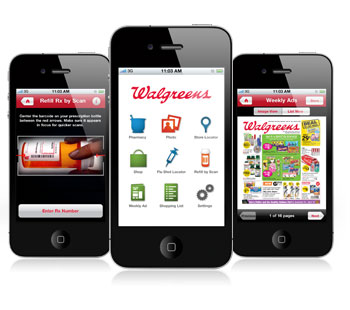
Welcome to our new series, “Tomorrow’s CXO.” At Bowery, we care a lot about the transitional shift going on within the Marketing and IT environments at many companies. Rather than boring our readers with our own ideas about this thesis we talk so much about, we thought it would be more worthwhile to interview a next generation marketing or IT leader at a F1000 company each week. Readers will get an inside look at the “changing of the guard” going on within companies and hear first hand how these next generation leaders are tackling challenges and solving problems.


Our first guest is our friend Adam Kmiec, who is the Senior Director of Mobile, Social, & Content Marketing at Walgreens.
(1) Give us some perspective – where was the Walgreens organization before you and your group came in, how did that change when you joined, and where are you guys today?
I’m fortunate to be a part of the Walgreens family. Most people don’t know this, but this is the 2nd time I’ve joined the organization. 4 years ago I joined to lead the development of our social capabilities. If you think back 4 years ago, most large organizations were outsourcing social to their agency partners. In many respects Walgreens was a pioneer in understanding the enterprise value that can come from social.
I re-joined the organization in February to continue scaling social, but to also establish our roadmap and approach for content. In the 2 years I was gone, the organization continued to evolve and get stronger. We’ve always been a leader when it comes to understanding the customer and developing game changing experiences. For example, the Walgreens mobile app is routinely recognized as being one of the best apps out there. It deserves that recognition. With features like Refill By Scan, Paperless Coupons and Pharmacy Chat, it’s a game changer.
 Coming from the CPG [consumer packaged goods] side, I had an up close and personal look at how other retailers were thinking about today’s omni-channel customer. There are few, if any, out there, who can match the strategy, critical thinking, and operational sophistication that Walgreens has. I feel great about where we’re at today.
Coming from the CPG [consumer packaged goods] side, I had an up close and personal look at how other retailers were thinking about today’s omni-channel customer. There are few, if any, out there, who can match the strategy, critical thinking, and operational sophistication that Walgreens has. I feel great about where we’re at today.
(2) What are some next generation products or services that you guys are using to accomplish your goals?
I can’t share too much of the secret sauce, but I think our history of innovation through smart partnerships and integrations is well documented. We were the first company in the world to integrate scannable coupons inside of FourSquare check-in, nearly 2.5 years ago. Last winter we partnered with TaskRabbit to deliver over the counter medicine to customers who were stuck in their homes because of the snow and frigid temperatures. And then last week we announced a partnership with WebMd to help customers improve their health and wellness, every day.
Those are just 3 examples. The entrepreneurial and innovation culture is one of the key elements that keeps us all motivated and focused on delivering experiences that, yes, grab headlines, but they also remove friction for our customers.
(3) I’m sure you get pitched by a lot of vendors – what are some specific things you look for when assessing both the old and new guard of IT vendors and what advice would you give someone looking to sell to Walgreens?
In 2012 I wrote a post about the mistakes organizations are making when pitching me. I’d like to think that things have changed in 2 years. But in my experience, the same challenges that existed then exist today.
Ultimately, I think a lot of the mistakes boil down to patience. Sales people have a sales goal for the week, month, quarter and/or year. I completely understand that; remember I came from the agency world. But, their urgency to “get something done” doesn’t always match with the timing I’m working against. Rather than understand that reality, I think too many companies try to expedite timing through a number of techniques. Rarely do those techniques work. It sounds simple, but if you want to partner, be an actual partner.
(4) What has been the biggest change you’ve seen in the CMO landscape over the past 5 years and where do you ultimately think we are heading as it relates to your role and the role of a CMO?
The scope of responsibility for CMOs has changed dramatically in the past 5 years. CMOs today, more so than ever, need an understanding of digital that goes beyond the pre-read and foundational levels. The customer/consumer landscape moves too quickly to wait for the quarterly updates that come from analyst firms.
Today, a company’s product can be marketing, and often that product, is a digital product. If a company has an app, they have a product. That product reflects on the organization and for many, it’s a daily touchpoint between the customer and organization. 5 years ago, it might have been acceptable for a CMO to say, “we need an app.” Today, CMOs are in the tough meetings that are making sure that app is as outstanding as the products they sell on shelves or the experiences they provide in the store.



